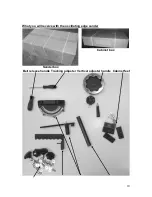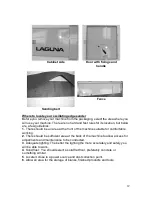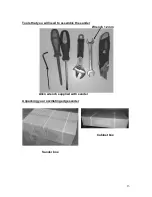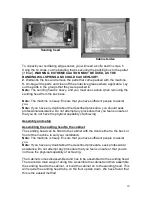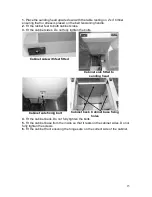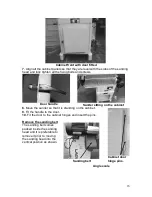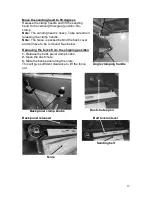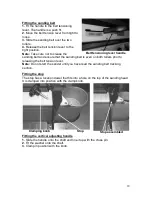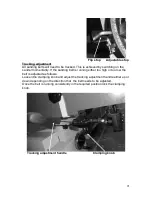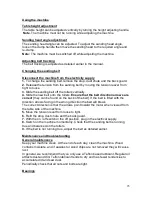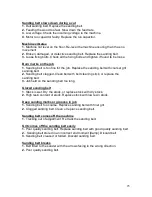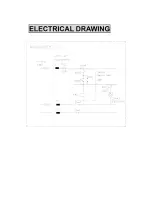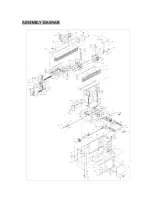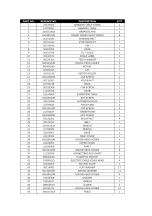
24
All bearings are sealed for life and do not require any maintenance. If a bearing
becomes faulty, replace it.
Rust
The oscillating edge sander is made from steel and cast iron. All non painted
surfaces will rust if not protected. It is recommended that they are protected by
applying wax or a Teflon based lubricant
Sanding head oscillation syste.
The vertical oscillation of the sanding head is generated by the fixed cam and
cannot be adjusted.
Troubleshooting
Oscillating edge sander will not start
1.
Check the supply voltage is correct.
2.
Check that the electrical power cord is plugged into the power outlet.
3.
Check that the electrical supply is on [reset the breaker].
4.
With the power disconnected from the machine, check the wiring to the plug is
correct. Check that the rubber insulation is stripped enough and is not causing a
bad connection. Check that all the screws are tight.
The oscillating edge sander will not stop
This is a very rare occurrence as the machine is designed to fail-safe. If it should
occur and you cannot fix the fault, seek professional assistance. The machine
must be disconnected from the power and never run until the fault has been
rectified.
1.
Switch faulty. Replace the switch.
Motor tries to start but will not turn
1.
With the power disconnected from the machine, try to turn the sanding belt by
hand. If the sanding belt will not turn, check the reason for the jamming.
2
. Capacitor faulty. Replace the capacitor.
3.
Motor faulty. Replace the motor.
Motor overheats
The motor is designed to run hot, but should it overheat it has an internal thermal
overload protector that will shut it down until the motor has cooled, and then it will
reset automatically. If the motor overheats, wait until it has cooled and then
restart. If the motor shuts down consistently check for the reason. Typical
reasons are: dull sanding belt; motor cooling fan clogged or faulty; motor cooling
fins clogged; over feeding the job or excessive ambient temperature.
Squeaking noise
1.
Check that the motor cooling fan is not in contact with the fan cover.
2.
Check the bearings.

